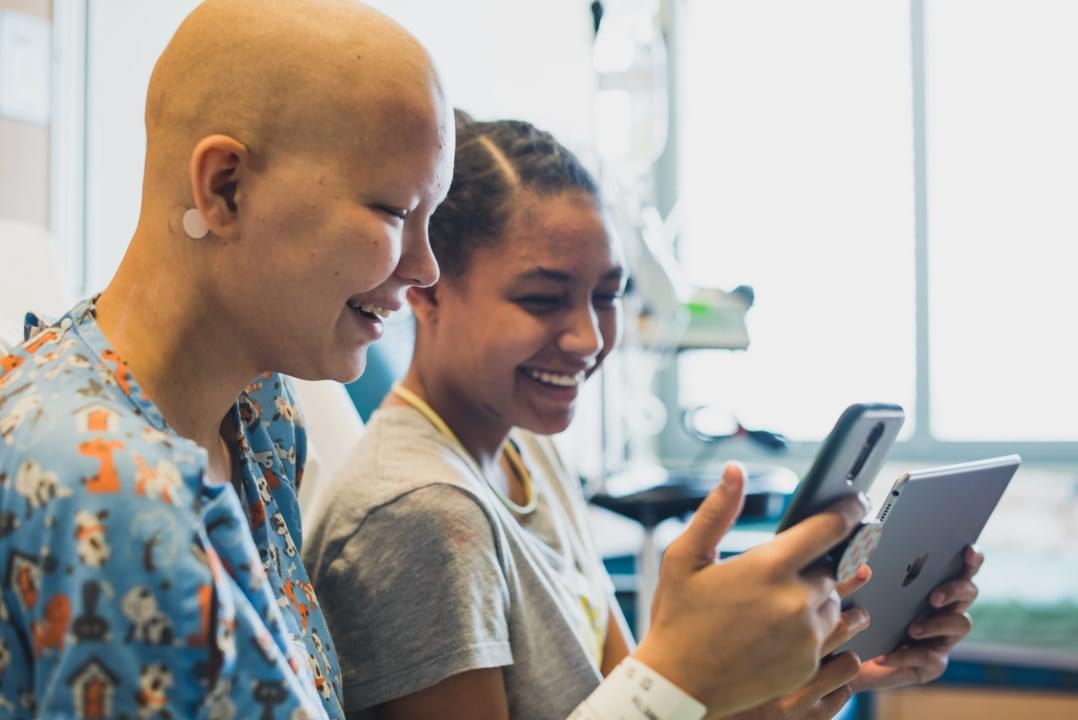
By Lee Barnathan, California Business Journal
To many patients, hospitals might seem like prisons: cold, antiseptic, sterile, boring. Very little to do. Very little entertainment or stimulation.
Taylor Carol might have felt this way, too, while he fought a type of leukemia. But he had one advantage: His father, Jim, had the financial means to bring in video games and various intellectual pursuits to pass the time.
“I saw the immense impact it had on my life,” he says.
Now cancer-free, Taylor and Jim have made it their missions to bring a similar impact to as many hospital patients – as well as their family and friends – as possible. To that end, they started ZOTT, a for-profit subsidiary of their GameChanger charity that seeks to equip hospitals with their innovative technology so everyone with a cell phone, tablet, gaming device or computer can play, learn and socialize with the best user experience possible.
“I saw the disparity between the haves and have-nots,” Taylor says. “It was undemocratic, who had it and doesn’t have it. We’re democratizing content.”
The ZOTT website (zott.tv) explains the technology in detail, but basically the wireless network eliminates the old hospital technology of wires, cables, servers and satellite dishes and allows anybody to access content, which is stored in the cloud.
And that content can come in seven different categories, all of which are age-appropriate.
Taylor spent six months in an isolation unit at age 11 and felt “broken and so alone.”
These shows help patients connect to not only the outside world but to real people on the outside.
These streams also provide educational content that teach people how to draw and do various crafts, as well advise friends and family on how to cope with the situation. Taylor calls these videos “interactive learning.”
The third subcategory is “Minecraft.” But not just any “Minecraft.” ZOTT has a dedicated Minecraft universe that’s only accessible by hospital patients.
For Taylor, having this game as a standalone is a no-brainer. Not only is it extremely popular worldwide (in fact, it’s the second most popular video game in history, according to PC Gamer, next to “Tetris,”), it helps build communities; and kids in hospitals don’t often feel connected.
Now, Taylor says, “Patients who wake up at 4 a.m. because their IVs fell off and can see 2,000 other patients playing, and they see that they’re not alone.”
And these videos won’t be boring clips like from the 1950s. ZOTT has clinical comic books, interactive videos, and affable celebrities explaining illnesses and treatment processes in relatable formats. Taylor says they would be “doctor-approved content that’s digestible and enjoyable.”
Jim Carol started building the ZOTT technology three years ago and placed it in 10 pilot hospitals around the country (he named three: Children’s Hospital Colorado in Aurora, Methodist Children’s Hospital in San Antonio and C.S. Mott Children’s Hospital in Ann Arbor, Mich.).
“We picked the hardest place to do this: pediatric hospitals,” he says.
And although ZOTT is for-profit, “This isn’t about making money,” he says. “This is about helping sick people. What we built and what we have running in hospitals allows every person in every part of the hospital to have a better experience.”
Copyright © 2018 California Business Journal. All Rights Reserved.
Innam Dustgir's journey from freelancing to becoming the CEO of three highly successful IT companies…
California has a big vision for the future of clean energy. This year, renewable energy…
The loss of a tooth can affect more than just your smile—it can impede on…
Imagine a young mother of two suddenly loses her husband in a tragic accident. The…
California, known for its diverse economy and thriving tech industry, is a hotbed for innovation.…
As a violinist, I can't stress enough how crucial a top-notch case is in the…